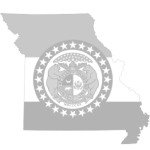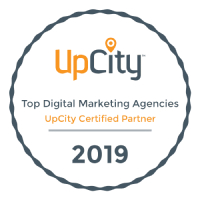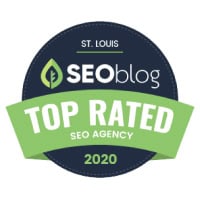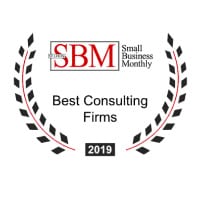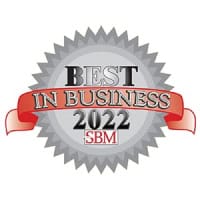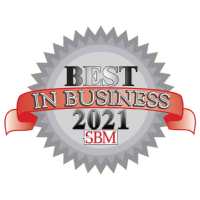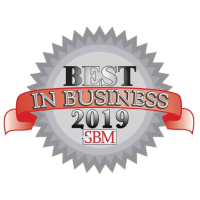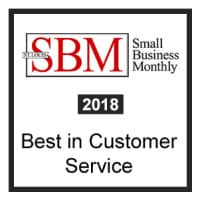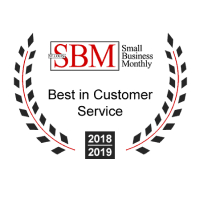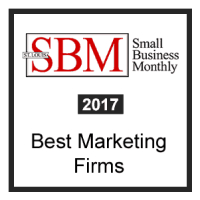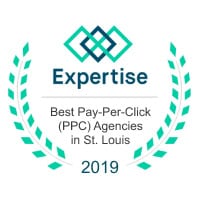If the internet was a roadmap, marketing strategy would be the route that drivers (in this case, customers) take to reach the final destination (companies, brands, etc.). Plotting these courses for Seafoam Media and our clients is Liz Oeltjen.
We cranked up the show tunes (her favorite) and dawned our batty jazz hands (it’s a thing, look it up) to coax Liz into a discussion about what makes a marketing strategy successful.
I am the marketing strategist for Seafoam, which is a fancy way of saying I get paid to come up with the BIG ideas. It’s an inside joke at the office that my brain is a twisted mix of rainbows and butterflies, floating around in blissful harmony to foster creativity and serendipity. Given enough coffee, there are some days that this may be pretty close to the truth. The most interesting part of my job, however, is the most mundane.
You see, anyone can come up with creative ideas. A ton of caffeine, doughnuts and a smidge of pressure; it’s the recipe for creativity, in my opinion. The hard part is making ideas smart – ideas that lead toward a productive and profitable goal. Writing a blog – well the internet is full of those. Writing a blog that will foster trust in the reader and compel them to purchase – that is much harder. This is what makes developing smart strategies so important.
My role is to drive the creativity percolating at Seafoam Media (and there is an abundance of it, I can assure you) into smart goals that drive results for our clients. One of my favorite questions – and also the one that my peers may find annoyingly endearing – is “why?”. My job is to make sure that our "why" (and our “what,” and our “who,” and our “how”) is always pointing toward measurable, smart and achievable goals. Without that, we are just shouting into the world wide web, hoping that someone will hear us.
It wasn't really one thing that happened in the last year but a number of things rolled into one. We moved to Maplewood in September of 2015. It wasn't until 2016 that we got our bearings and started to participate in all the city has to offer. From the coffee crawl, to A Taste of Maplewood and Shakespeare in the Streets, I have been amazed at how this community works with its citizens and local businesses to create a vibrant and fun place to be. It is truly a testimony to how people can come together and create something amazing. In short, it feels like in 2016, Seafoam Media came home; and I know I speak for everyone when I say that we are proud to be a part of the Maplewood community.
I have been with Seafoam for almost 2 years, which have gone by in the blink of an eye. Let me start by saying I love what I do. I look forward to some of the challenges as much as our joint accomplishments as a team. I think the most amazing part about my evolution with Seafoam Media is that I have been allowed to evolve into areas that I am passionate about. I love strategy. I love coming up with a great plan and digging into the data as we execute said plan. (My 20-year-old self is groaning in shame right now. Who knew I would grow up to be such a marketing nerd, and proud of it? Back to the amazing part, though…)
The Seafoam Media corporate culture is based on harnessing every employee's individual passion and building on it. When you have happy employees doing what they love, you can make amazing things. I am just happy to be part of it, not only growing myself but also growing the team that’s evolving into a smart, dedicated and unique group of creative minds.
I am a pop culture junky, and I love to read. Books, magazines, social media or random websites; I consume them all. I have become pretty savvy when it comes to skimming to the best parts because, as a working mom, I have limited time. What I have learned is something that marketers have known for decades: the cream rises to the top. Only the most compelling, most interesting and most informative gets through at this point.
This is our strategy for our clients in 2016: to be the cream of the crop. It is not enough to simply create. We need to excel. The internet is full of data. The best way to cut through the din is to show the world that our clients are the best at what they do with smarter, more compelling and goal-oriented content.
The biggest lesson I learned in 2016 (other than to move quickly when it comes to grout.) I think the big lesson of 2016, for me, is to learn and grow from your setbacks. This has been a big year of growth for me professionally. I would love to say that everything I touched worked out absolutely perfectly, but that is simply not true.
As a type A perfectionist, this was a hard lesson for me, and one that I have to keep learning. Even the best ideas fail sometimes, no matter how hard you try. All you can do is keep trying; tweak your efforts based on the lessons that you have learned.
In this way, I am reminded of gold: The first couple of times I tried to hit the ball, I kept missing. This led me to swing harder, without changing my stance, which only led me to fail harder. It wasn't until I stopped, revamped my swing and kept my eye on the ball that I was able to connect. And then I understood why people actually play the game.
Success feels good, especially when you have to work for it.
Marketing changes fast. Technology changes even faster. This creates quite the hurdle when you’re looking to modernize your marketing and advertising efforts.
Let’s take a step back and look at the reason you may want to explore online marketing and advertising in the first place.
One of the fears I hear most frequently from our new clients is that the sheer pace of change in both marketing and technology is intimidating and hard to manage.
For example, in a single year, you need to be aware of changes to search engine algorithms and PPC methodology, web design trends, new tools, modified restrictions on social media, changing demographics, new social networks or review sites, popular “hubs” online, updates to servers, Content Management Systems (CMSs) and programming languages, as well as a number of other constantly changing rules, trends, and platforms.
There are two things I advise most people do.
The traditional sales funnel helps you visualize the path a person takes from being a stranger to becoming a customer. It uses steps that are refined along the pathway to completion: Lead Generation > Lead Qualification > Product Presentation > Proposal > Close Sale.
The Internet Marketing sales funnel uses the same concepts but replaces some terminology and tactics:
 STAGES OF THE FUNNEL: INITIATIVES/TACTICS AVAILABLE
STAGES OF THE FUNNEL: INITIATIVES/TACTICS AVAILABLEAwareness: SEO, Email Marketing, PPC, Social Media, Blogs
—> Generates interest and awareness. Your business becomes “findable."
Enticement: Click Through Rate (CTR), Meta Titles and Descriptions, Ad Copy, Ad Imagery, General Branding, Copywriting
—> Encourages the user to take the next step (i.e., click a link to your website).
Qualify/Convert: Website, Conversion Optimization (increase your conversion rate), Ecommerce, Website Copy, Website Call To Action (what do we want the user to do once on the site?)
—> Show the potential customer why they should buy your product or service.
Maintain Relationships: Email Marketing, Blogs, Social Media
—> The best business is repeat business!
Repeat Business.
Viewing the tactics we use in online marketing and advertising through the lens of the traditional sales funnel allows us to prioritize costs and energy (based on where are customers are in the funnel), draw up sales projections (using lead qualification based on the funnel), and visualize more simply the wide array of marketing and advertising tools available to us online.
Staying informed and utilizing a framework like this help to keep your efforts organized and targeted.
And let’s not kid ourselves, we could all use a little help getting more organized and targeted!


